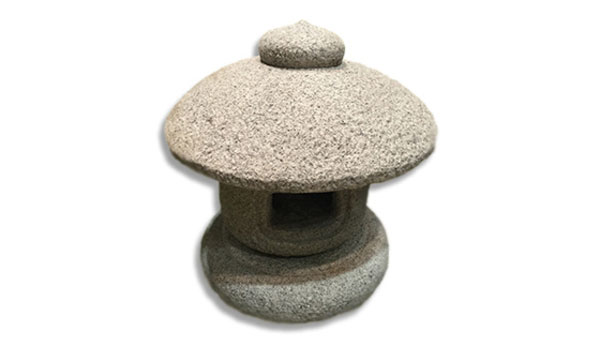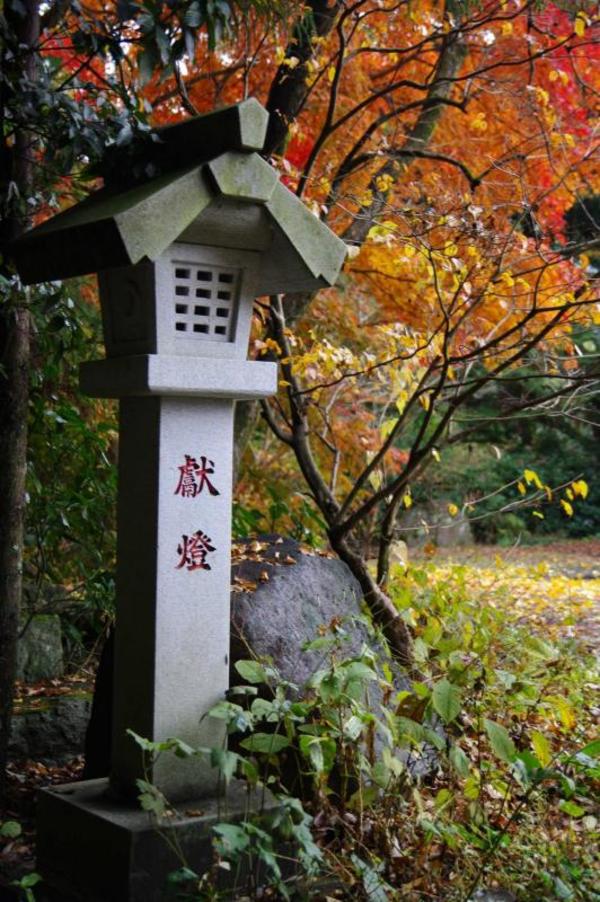
- Stonework
- Ibaraki
Makabe stone lanterns Makabe ishidoro
A warm light and carved stones
in the style of a traditional Japanese garden
Description
What is Makabe stone lanterns ?
Makabe Ishitoro is the Japanese name for Makabe stone lanterns produced around the town of Makabe in the Ibaraki Prefecture. Production of this traditional craftwork started during the Kamakura period (1185-1333). The stone industry in the Makabe region was already thriving at that time and was regarded as one of the three major stone production areas in Japan. The key features of Makabe stone lanterns are its pure white color tone from the high quality granite quarried from Mt. Kaba and other local sites. The traditional carving techniques of Makabe stone lanterns were handed down through the generations. With high craftsmanship, hundreds of lantern shapes including legged lanterns, pedestal lanterns, and buried lanterns are still produced today. Stone lanterns are hand-carved one by one to match a particular Japanese garden which gives them both a substantial and ethereal presence, and is subtly fascinating to the viewer. Stone lanterns become increasingly attractive with time as they are covered with moss so they gradually and naturally blend in the garden landscape harmoniously. Within a couple of years or so, the stone lantern will have mellowed to give a gentle feeling of wabi sabi, which is a traditional Japanese aesthetic described as "imperfect, impermanent, and incomplete".
History
In the Makabe area of the Ibaraki prefecture, articles made from stone have been produced for a long time. It is also said that people of the old days considered stones to be imbued with spiritual power. The actual crafting of stone in the area began around the end of the Muromachi period (1336-1573). At that time, the production of Buddhist stone articles gave a boost to the industry, and a kind of Buddhist pagoda called gorinto and stone monuments were produced. The oldest stone lantern that has been found was made in 1824 and still remains in a temple in Makabe. During the Edo period (1603-1868), stone lanterns were set in many shrines and were lit throughout the night. As they came to be appreciated by more people, production skills were also developed. Kichibei KUBOTA, a stonemason, established traditional techniques at the end of the Edo period, which are still used today. In the Meiji period (1868-1912), with the modernization, the use of Makabe stone increased and it was also used in constructing buildings. It is said that the stone lanterns made as a traditional craft for traditional Japanese gardens rapidly spread as part of the boom of landscape gardening in the Showa period (1926-1988).
Production Process

- 1. Selecting the stones Over a long period of time, as many as 18 techniques to produce the Makabe stone lanterns were developed, and these traditional techniques have been passed down from master to apprentice for many generations. A variety of tools such as chisels and bush hammers were also developed by the masons. It is important to find the finest quality stone to make the best of such advanced techniques. Makabe stone is a form of granite quarried mainly from Mt. Kaba and is considered to be about 600 thousand years old. A quality check for flaws and cracks in the stone is essential as any hidden flaws could ruin a lantern during the production process. After the stone is selected, it is divided into six parts: a gem shaped part to be placed on the top, the shade, fire box, central platform, post and base platform, each of which is marked with ink. They are then roughly hand cut and are carved with chisels and bush hammers.
- 2. The gem shaped part on the top In this first stage of shaping the gem, a tenon is carved to be joined to the shade. Next, the lotus shaped support, the top and peak are made, followed by the carving of the detailed sections.
- 3. The shade The gentle curve of the shade depends on the artisan's experience, techniques and excellent artistic sense. The shade is firstly carved roughly, followed by smoothing the entire surface and carving the slope. Then, a mortise to match the tenon of the gem shaped top part is created. In addition, a hollow to match with the fire box is carefully carved. Finally, decorative patterns are carved into the shade.
- 4. The fire box Firstly, patterns are carved on the fire box and then the inside is carved to make a hollow. Next, the important opening for the flame is carved according to the ink markings. This process requires highly advanced skills.
- 5. The central platform On the bottom surface of the central platform, a mortise for the post is carved, followed by the creation of a lotus shaped support, and patterns are carved on the sides of the platform.
- 6. The post The post has the most important role among all the parts, and a higher quality of stone is used for it. Carving the post roundly requires high skills and years of experience. Firstly, the top and bottom are horizontally carved. Then, tenons are created to fit with the central platform and the base platform. A band and patterns are carved to complete.
- 7. The base platform The base platform supports the entire structure, and its sides and underside are carefully carved. After a downward lotus petal pattern is carved, a mortise for the post is made and detailed parts are carved.
- 8. Assembly The completed six parts are assembled. By carving carefully throughout the whole traditional process, the elegant stone lantern is completed. Over time, many lantern shapes have been created including shapes based on natural features, storied towers, and new contemporary forms as well as the legged lanterns, pedestal lanterns, and buried lanterns types. The artisans hand carve each lantern after carefully considering their harmony with the garden where they will be set to rest and slowly blend into nature.































































































































































































































































































